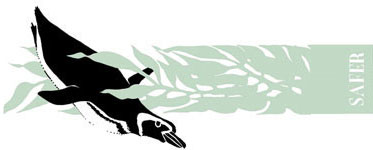Island Descriptions
Bense Island
Bense Island is the largest (c. 264 acres or 107 hectares) and most modified of the parcel, having been grazed by sheep, cattle, horses, and rabbits. The last of the livestock were removed in 1985, and the rabbits in 2016. Rats and mice, accidentally introduced in the 19th Century, were present until being eradicated in 2016. In addition, a fire in 1985-86 scorched about 25% of the island down to bare soil and rock. While a wide variety of plants and animals still remain on parts of the island, the fire has had an indirect impact that continues today. Loose peat soil from the burn zone has been shifted by wind and is now accumulating on top of healthy vegetation on the eastern side of the island.

Bense Island | View Gallery
Little Bense Island
Little Bense Island (c. 91 acres or 37 hectares), is located about 200m off Bense Island. The two islands are separated by a narrow channel that can crossed on foot at low tide. Introduced rats, mice, and rabbits were found here until they were eradcated in 2016. Although Little Bense formerly hosted livestock until the 1980s, the grazing pressure here was light and it is in better ecological condition than Bense Island with extensive stands of dense, healthy tussock grass. There was no fire here. Little Bense is home to a colony of about 60 South American sea lions and a wide variety of birds.

Little Bense Island | View Gallery
Cliff Island
Cliff Island (c. 60 acres) is ecologically pristine and has never been inhabited or modified by human activity, probably because there are no easy landing sites. It is situated about 3 km from Bense Island and is completely covered by tussock grass. This island supports a wide variety of both sea and land birds, including the endemic tussac bird (Cinclodes antarcticus) and Cobb’s wren (Troglodytes cobbi).

Cliff Island | View Gallery
Bradley Islet
The smallest of the SAFER Islands at less than 1 acre, Bradley’s steep rocky sides make landing difficult. The summit is crowned by a tiny patch of stunted vegetation and it is used as a roost by imperial and rock shags, sheathbills, and sea lions.

Bradley Islet | View Wildlife Gallery
